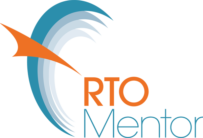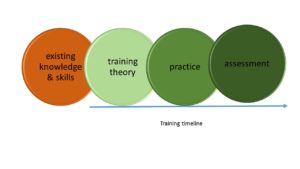Amount of Training
One clue that someone doesn’t understand a problem is that they need a large number of variables and factors to explain it. However if you turn a complex situation into something overly simple, it shows ignorance of how the system works. The VET sector is constantly seeing people questioning what is the “Amount of Training”. Recently with the huge audit processes happening for RTO’s to obtain the new TAE on scope, it is becoming very clear that people are not getting it. So today I am going to try to explain clearly what the amount of training is, so that everyone gets it.
This information also assumes you are conducting a learning and assessment pathway, rather than an assessment only.
Considering your learner cohort in making a decision on the amount of training
One of the first things when designing your training program is to determine who your students will be. This enables you to understand their needs as far as the training is concerned. To determine the needs of learners within a target group you should consider the following questions and document your approaches:
- Are they workers, school leavers, mature learners or other?
- Do they have related skills and knowledge they can bring from work experience?
- Do they have any workplace experience?
- What is their current language, literacy and numeracy (LLN) level?
- Are the learners new to the industry?
- Do they significant experience in the field you are training?
- Do they have special needs e.g. physical or intellectual disability?
When you have determined the needs of your clients, you should have a better idea of the sorts of training that will suit them. This way you can structure your training program accordingly.
Training
To be “trained” each learner will:
- be trained in each skill and knowledge area, and
- have the opportunity to practice and apply these skills and knowledge requirements.
an important part of the process is that you give each learner the opportunity to:
- fully absorb the required knowledge, and
- develop skills over time in the different contexts they would experience in the workplace.
When we talk about training we are referring to the formal learning which includes all the teaching; online, in class room, activities, research, questioning, and practice of skills and applying the new knowledge. It does not include assessment.
Length of time
The length of time you take to do this with each student is reflected upon the amount of exiting knowledge and skills they bring to the training.
The following diagram shows a typical student who comes to a course:
If, for instance, you plan to deliver to students who comes with skills, knowledge and workplace experience appropriate to the industry you are training in, then you would choose a smaller amount of training. The following diagram shows how this looks, showing larger amount of existing knowledge and skills and the course being shorter:
Remember in both instances you need to ensure that each learner has fully absorbed the required knowledge and has developed the skills required in a range of different contexts.
In this case the skilled/experienced learner may be able to complete ‘gap-training’ or accelerated learning reflective of the learner’s existing competencies.
If your RTO intends to deliver to learners who are new to the industry area and/or who do not have any workplace experience, the amount of training required that is described in the training and assessment strategy would closely match the timeframe listed with the AQF volume of learning.
Also refer to the ASQA / TAC Users Guide – more information is found there.


